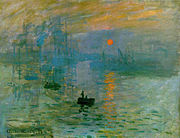From the Jakarta Post:
Mt. Anak Krakatau’s activity escalating: Official
The 1883 killed at least 36,000 and possibly over 100,000 people. We have another link that appears to be broken;
Mt. Anak Krakatau (JP)
Mount Anak Krakatau continued on Sunday its frenzied expulsion of volcanic material, including hot rocks, sand and dust shrouded in toxic fumes — seven times more frequently than just a week earlier.
“Usually Mt. Anak Krakatau experiences an average of 90 to 100 small scale eruptions a day. Now, the number of eruptions can reach 700 a day,” Andi Suhardi, head of the Mt. Anak Krakatau observation post in Hargo Pancuran village, said on Monday.
Mt. Anak Krakatau is a volcano located near Krakatau Island between Sumatra and Java.
“Solid material falls on the mountain slopes. However, the sand and volcanic dust can cover greater distances depending on how strong the wind blows,” Andi said.
He added that Krakatau’s volcanic activity has been increasing slowly since last Monday, reaching almost 90 eruptions per day. Activity further escalated after Mt. Merapi in Central Java erupted, he said....MORE
http://www.thejakartaglobe.com/news/eruptions-happen-say-officials-urging-preparation-and-calm/404798
With that 'Eruptions happen' attitude in mind one positive may be a resurgence of creepy art:
From Sky & Telescope
A new analysis of Edvard Munch's The Scream provides the precise location where Munch and his friends were walking when he saw the blood-red sky depicted in the 1893 painting, as well as an explanation of why the sky appeared to be on fire. Through Munch's journals, topographic analysis, and a connection to the eruption of Krakatoa, proof now exists that the spectacular twilight seen in one of today's most recognizable paintings was inspired by this dramatic event.
In "When The Sky Ran Red: The Story Behind The Scream," in the February 2004 issue of Sky & Telescope magazine, Donald W. Olson, a physics and astronomy professor at Texas State University, and his colleagues Russell L. Doescher and Marilynn S. Olson reveal how they journeyed to Oslo, Norway, to pinpoint the exact location where Munch stood when he "felt a great, unending scream piercing through nature," inspiring him to put his emotions on canvas. They determined that Munch and his friends were walking along a road once called Ljabrochausséen, which is now a modern roadway called Mosseveien. It was along the railing of Ljabrochausséen that Munch became overwhelmed with emotion. Olson and his team located a rocky hillside overlook that precisely matches the artist's vista of Christiania (now Oslo) harbor and Hovedø island....MORE
The Scream (1893) by Edvard Munch.
While Sky & Telescope focused on The Scream, the effect can be seen in other art of the decade following the eruption including some Impressionist masterpieces.
A similar size eruption in 1815 is believed to have influenced the color choices of J.M.W. Turner:


Source: Guardian Unlimited
You can see more of the effect in the Tate Museum's online Turner collection "Skies Sketchbook [Finberg CLVIII]"
